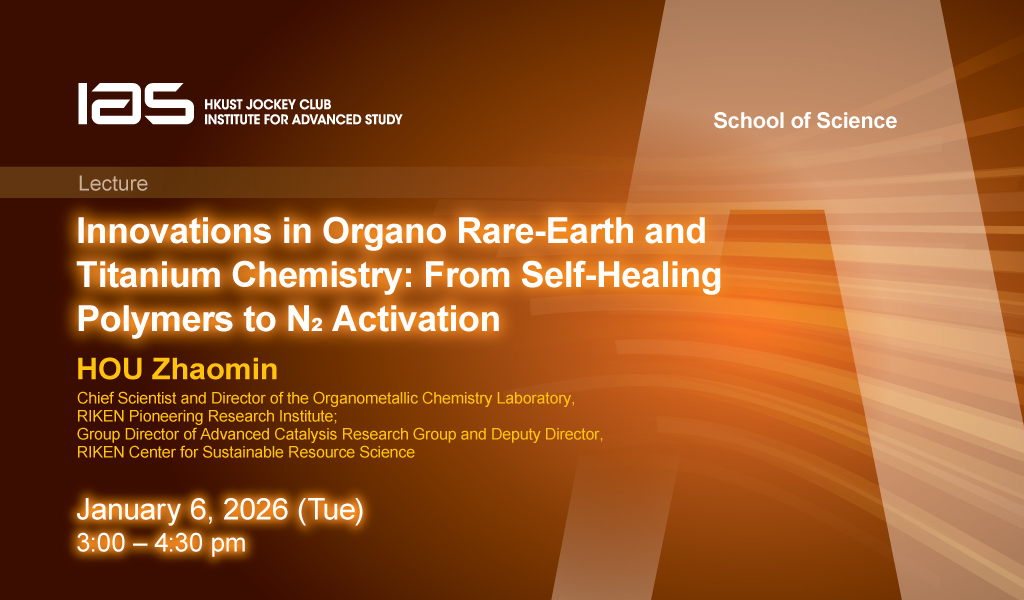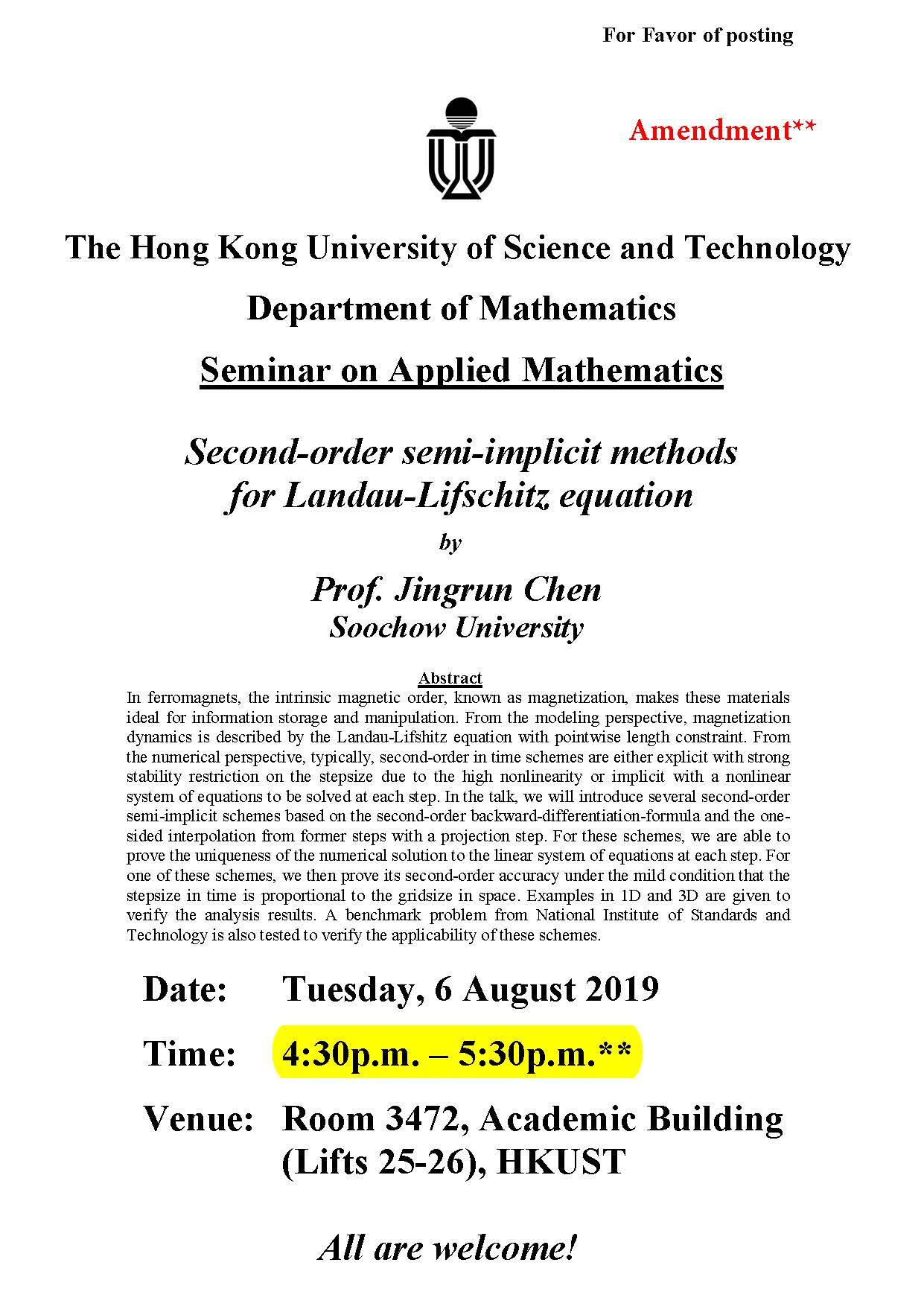更多科大概覽
In ferromagnets, the intrinsic magnetic order, known as magnetization, makes these materials ideal for information storage and manipulation. From the modeling perspective, magnetization dynamics is described by the Landau-Lifshitz equation with pointwise length constraint. From the numerical perspective, typically, second-order in time schemes are either explicit with strong stability restriction on the stepsize due to the high nonlinearity or implicit with a nonlinear system of equations to be solved at each step. In the talk, we will introduce several second-order semi-implicit schemes based on the second-order backward-differentiation-formula and the one-sided interpolation from former steps with a projection step. For these schemes, we are able to prove the uniqueness of the numerical solution to the linear system of equations at each step. For one of these schemes, we then prove its second-order accuracy under the mild condition that the stepsize in time is proportional to the gridsize in space. Examples in 1D and 3D are given to verify the analysis results. A benchmark problem from National Institute of Standards and Technology is also tested to verify the applicability of these schemes.
8月6日
4:30pm - 5:30pm

地點
Room 3472, Academic Building (Lifts 25-26)
講者/表演者
Prof. Jingrun Chen
Soochow University
Soochow University
主辦單位
Department of Mathematics
聯絡方法
mathseminar@ust.hk
付款詳情
對象
Alumni, Faculty and Staff, PG Students, UG Students
語言
英語
其他活動

1月6日
研討會, 演講, 講座
IAS / School of Science Joint Lecture - Innovations in Organo Rare-Earth and Titanium Chemistry: From Self-Healing Polymers to N2 Activation
Abstract
In this lecture, the speaker will introduce their recent studies on the development of innovative organometallic complexes and catalysts aimed at realizing unprecedented chemical trans...

12月5日
研討會, 演講, 講座
IAS / School of Science Joint Lecture - Human B Cell Receptor-Epitope Selection for Pan-Sarbecovirus Neutralization
Abstract
The induction of broadly neutralizing antibodies (bnAbs) against viruses requires the specific activation of human B cell receptors (BCRs) by viral epitopes. Following BCR activation, ...

